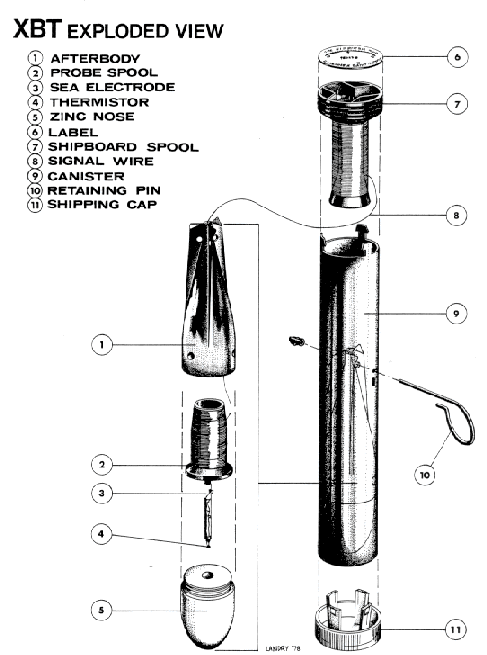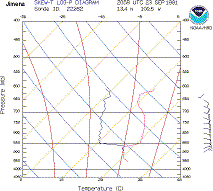 Exploded view of an AXBT References
Rogers, R.F., S.D. Aberson, J. Kaplan, and S.B. Goldenberg. 2002 "A pronounced upper-tropospheric warm anomaly encountered by the NOAA Gulfstream-IV aircraft in the vicinity of deep convection." Monthly Weather Review, 130(1) pp.180-187 Aberson, S.D., and J.L. Franklin. 1999 "Impact on hurricane track and intensity forecasts of GPS dropwindsonde observations from the first-season flights of the NOAA Gulfstream-IV jet aircraft." Bulletin of the American Meteorological Society, 80(3) pp.421-428 Burpee, R.W., J.L. Franklin, S.J. Lord, R.E. Tuleya, and S.D. Aberson. 1996 "The impact of Omega dropwindsondes on operational hurricane track forecast models." Bulletin of the American Meteorological Society, 77(5) pp.925-933 Franklin, J.L., S.E. Feuer, J. Kaplan, and S.D. Aberson. 1996 "Tropical cyclone motion and surrounding flow relationships: Searching for beta gyres in Omega dropwindsonde datasets." Monthly Weather Review, 124(1) pp.64-84 Burpee, R.W., S.D. Aberson, P.G. Black, M. DeMaria, J.L. Franklin, J.S. Griffin, S.H. Houston, J. Kaplan, S.J. Lord, F.D. Marks, M.D. Powell, and H.E. Willoughby. 1994 "Real-time guidance provided by NOAA's Hurricane Research Division to forecasters during Emily of 1993." Bulletin of the American Meteorological Society, 75(10) pp.1765-1783 Franklin, J., S. Lord, and F. Marks, 1988 "Dropwindsonde and radar observations of the eye of Hurricane Gloria (1985)." Mon. Wea. Rev., 116, pp.1237-1244. Contact information on Dropwindsondes mail to : Sim.Aberson@noaa.gov, Return to aircraft page. Updated June 16, 2003 |
About HRD
Links of Interest
AOML Tools & Resources
Employee Tools
|




